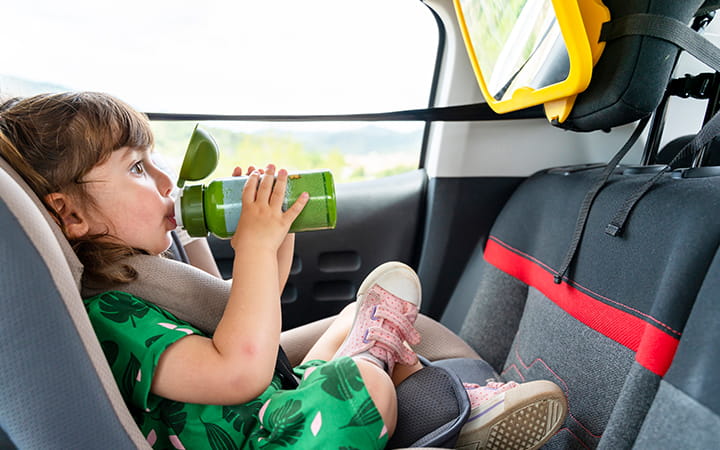The Safest Way For Your Kids To Ride
December 20, 2019
 University Hospitals Rainbow Babies & Children'sExperts in Children's Health
University Hospitals Rainbow Babies & Children'sExperts in Children's Health


Many parents (and children) are eager for the day when they can turn the car seat to a forward-facing position. Before you do the switcheroo, however, be sure to review the latest recommendations from the American Academy of Pediatrics (AAP).
Keep Kids Rear-Facing As Long As Possible
Previously, the AAP recommended that children remain rear-facing until age 2. The AAP recently updated its car seat safety guidelines in late 2018. The biggest change? They’re no longer based on age.
The AAP now recommends kids stay rear-facing until they reach the maximum height or weight the car seat manufacturer allows. Most convertible car seats have rear-facing weight limits up to at least 40 pounds. For many kids, that occurs well beyond their second birthday.
“Once your child reaches the rear-facing height or weight limit for their car seat and you can safely turn their seat around, they should continue riding in their car seat until they reach the maximum forward-facing weight or height limit,” says Linda Orosz, MD, a general pediatrician with UH Rainbow KidsFirst Pediatrics.
Why keep them rear-facing for so long? If a crash occurs, the car seat’s hard shell supports the child’s head, neck and spine, and the car seat absorbs most of the impact. When kids are forward-facing, however, the harness straps restrain their bodies, but their heads can get thrown forward. That can result in injuries to the head and spine.
Other Car Seat Safety Tips
In addition to keeping children rear-facing for as long as possible, Dr. Orosz offers a few more ways you can help protect your kids in the car:
- Make sure the harness straps fit snugly against the body.
- Slide the chest clip to armpit level to keep the harness straps secure.
- Never use a car seat that’s been in a crash, has been recalled, has cracks, is missing parts or is beyond the expiration date on the label.
- Remove bulky clothing, such as winter coats and snowsuits, before putting your child in the car seat – in a crash, they flatten out and your child could get thrown from the seat.
Contact the car seat’s manufacturer if you have any questions about the safety or proper installation of your car seat.
Your Child's Comfort
You may look at your child’s bent legs or other funky position when riding in their rear-facing car seat and wonder whether this is still safe.
The short answer is yes. As long as they are still within the weight and height limit for the rear-facing car seat, it’s the safest place to ride – pretzel legs and all.
Children’s feet or legs may touch the back of the car seat, but they can bend them easily and still be comfortable. Injuries to the legs are very rare for children when they’re riding rear-facing.
Related links
Rainbow Babies & Children's Hospital offers free car seat checks. Visit UHRainbow.org/CarSeatCheck to learn about our car seat fitting stations, staffed by nationally certified child passenger safety technicians.


